Dyeing (Associated spots)
Introduction to associated facilities
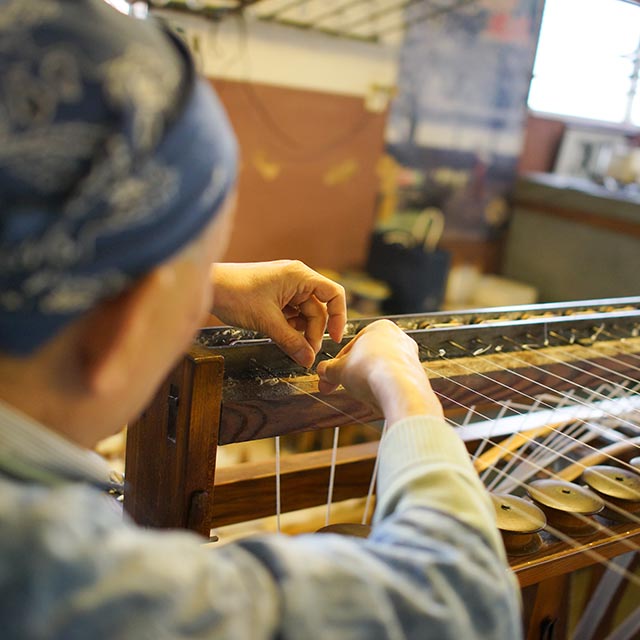
Itokobo “Mori” (Thread Workroom)
- Ome City
- The Culture of the Tama area
“Kurohachijo” is a silk fabric from the Akigawa River basin, which was popular nationwide during the Edo period. This technique of dyeing with nuts called Alnus firma and mud from the Akigawa River was once lost in the Meiji era. At the thread workroom “Itokobo Mori” in Akiruno City, the technique that has been forgotten over so much time has been reactivated by self-taught craftsmen and is now exhibited and sold under the name “Itsukaichi Dyeing”. Why don’t you get the stylish black that once helped color the world of the geisha and has been revived in the present age in Itsukaichi?
1129 Ina, Akiruno City Tokyo, 190-0142
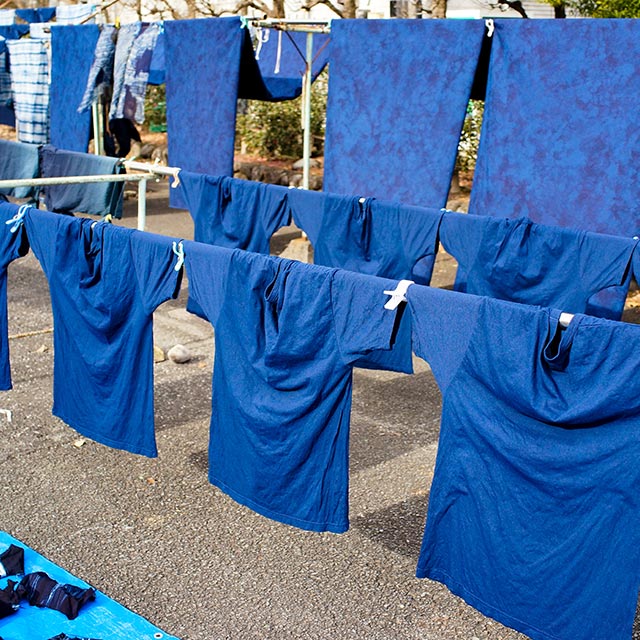
Kosoen
- Ome City
- The Culture of the Tama area
“Kosoen” is an indigo dyeing studio located about a 20-minute walk from Ome Station on the JR Ome Line.The indigo dyeing solution of Kosoen is made by a method called “natural indigo ash juice fermentation”. It is an ancient Japanese manufacturing method used since the Edo period, and uses only natural ingredients without any chemicals. Though the dying process takes time, the indigo becomes more reddish and shines with each dyeing.The deep “indigo”, which is different from “blue” and “navy blue” is called “Japan Blue”, because of its beauty, and it is said that it surprised the world when first seen. Indigo dyeing experience classes are also held at Kosoen.Why don’t you take a closer look at the indigo color that impressed the world?
8-200 Nagabuchi, Ome City, Tokyo 198-0052

Okuda Print
- Hachioji City
- The Culture of the Tama area
Okuda Print which moved from Katsushika Ward to Nakanokami-cho in Hachioji City in 1942, mainly dyes and finishes in silk-screen printing which prints one color at a time on the fabric.
Mr. Okuda, who runs this company, has a strong inquiring mind for manufacturing. He has always challenged new fields rather than abandoning tradition as outmoded by pursuing new textile expressions with designers and making proposals for art, interiors, space production etc.
31-12-14 Nakanokami-cho, Hachioji City, Tokyo 192-0041
Introduction to tourist spots

Fukasawa Tiny Museum
- Akiruno City
- The Culture of the Tama area
“Fukasawa Tiny Museum” is a private museum located in the lush greenery of the Fukasawa area where works by modeling artist Akimitsu Tomonaga and others are exhibited. It is a hidden place where a garden covered with greenery quietly surrounds an antique building.Approximately 100 puppets designed and produced by Mr. Tomonaga which appeared in the puppet show “Purin Purin Monogatari” broadcast on NHK from 1979 to 1982, are on display. In addition, you can see about 50 handmade works such as wooden carvings, woodblock prints, and lamps by Mr. Tomonaga.Coffee and tea can be enjoyed in the adjoining tearoom, and you can spend an elegant time overlooking the beautiful garden and pond.
492 Fukasawa, Akiruno City, Tokyo 190-0172
TEL. 042-595-0336

Takao-san Mountain Trick Art Museum
- Hachioji City
- The Culture Foods of the Tama area
At the foot of Takao-san Mountain, a tourist attraction in the Nishitama area, the “Takao-san Mountain Trick Art Museum” is a playful mood museum where huge kaleidoscopes and deception paintings are exhibited. The building is four stories with about 250 walls inside the facility and many murals outside the building. “Swaying cityscape” is a painting drawn of three houses, and it is a unique mechanism that makes the houses look three-dimensional when you move your eyes to the left and right. A huge kaleidoscope with a total length of about 5 meters lets you see spectacular pink and blue holograms when you look inside. You can take pictures inside the building, so you can take memorable pictures with your family and friends and have fun. It seems that memories of sightseeing in Takao will increase.
1786 Takao-machi, Hachioji City, Tokyo 193-0844
TEL. 042-667-1081

Old Inaba House
- Ome City
- The Culture Foods of the Tama area
The old Inaba house, which is about a 10 minute-walk from Ome Station on the JR Ome Line, was used by the town leader in Ome-juku.A town leader was a town official in the Edo period, and the Inaba family was in charge of the Ome-juku as the chief.The main building, which was said to have been built in the latter half of the Edo period, was built in the style called “Misegura”. “Misegura” which doubles as a residence and shop was a house built with the walls covered in mud, and it seems that you can see the former appearance of the Inaba family, who was also one of Ome’s leading merchants.The old Inaba house was donated to Ome City by the owner in 1979 and was designated as a tangible folk cultural property in Tokyo in March 1981.
499 Morishita-cho, Ome City, Tokyo 198-0089
TEL. 0428-23-6859
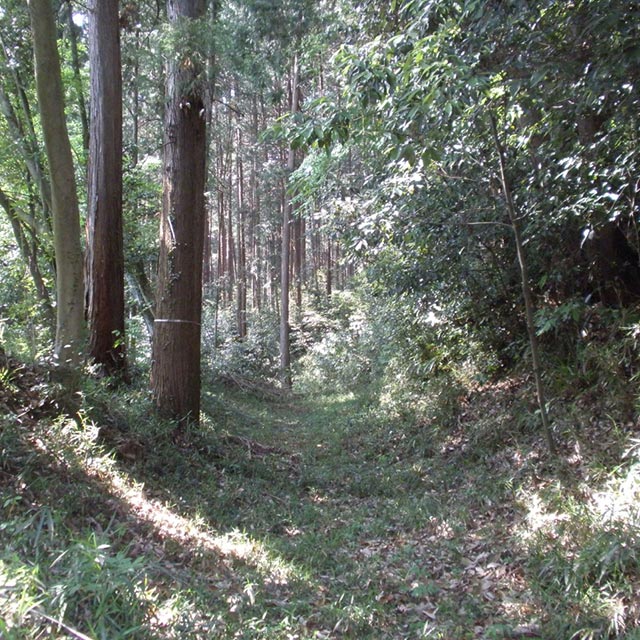
Katsunuma Castle Ruins
- Ome City
- The Culture Foods of the Tama area
Katsunuma Castle is said to have been the residence of the Mita Family who ruled the Ome area during the Muromachi period.After the fall of Mita, it was under the jurisdiction of Hojo Ujiteru of the Hojo clan. Later, when Toyotomi Hideyoshi destroyed the Hojo Family, it is said that the castle also fell.The castle ruins in Higashi-Ome in Ome City were designated as a historical environment conservation area in Tokyo in 1975 and designated as a historic site in Tokyo in 1993.While the ruins of the castle are densely covered with trees, the earthworks and empty moat that were built to protect the castle can still be seen, and it’s possible to imagine the original appearance of Katsunuma Castle.
6-92 Higashi-Ome, Ome City, Tokyo 198-0042
TEL. 0428-23-6859
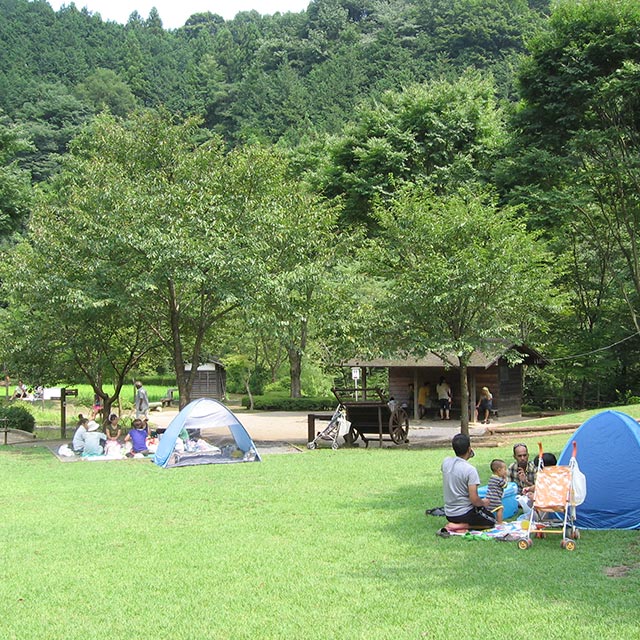
Yuyake Koyake Fureai no Sato (Park and Camping site)
- Hachioji City
- The Activity of the Tama area
Known as a model for the nursery song “Yuyake Koyake”, “Yuyake Koyake Fureai no Sato” at Kamiongata-machi in Hachioji City is a recreational facility where you can experience both the outdoors and indoors associated with the season. In summer many families visit for BBQ, camping and playing in the river. In addition, a variety of scenery spreads out in the park every season. You can see colorful flowers in spring, colored leaves in autumn, and woodland scenery close to the village in winter.
Furthermore, there are “Fureai-hiroba (a meeting place with small animals)” where you can interact with small animals such as rabbits and guinea pigs. There is a permanent exhibition of Nakamura Uko (a lyricist of nursery songs) of the song “Yuyake Koyake”, and a restaurant for seasonal dishes using fresh vegetables from local farmers and handmade soba. This is a fun place no matter when you visit.
2030 Kamiongata-machi, Hachioji City, Tokyo 192-0156
TEL. 042-652-3072
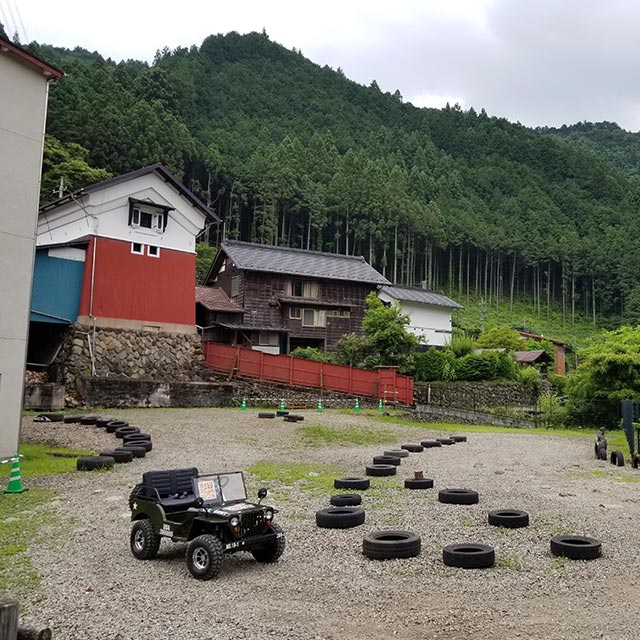
Riverside Garage
- Akiruno City
- The Activity of the Tama area
The mini jeep is spartan and rustic though retains some cuteness. These interesting vehicles can be rented at the Riverside Garage in Tokura, Akiruno City. If you have an ordinary driver’s license, you can drive on public roads with a mini jeep.Children can also drive on the dedicated circuit attached to the store if accompanied by a guardian. How about making your child’s driving debut a little earlier?
1402 Tokura, Akiruno City, Tokyo 190-0173
TEL. 042-588-4525
Seasons

Tama Forest Science Garden (Forestry Research Institute Tama Forest Science Garden)
- Hachioji City
- The Seasons of the Tama area
If you are looking for a little-known botanical garden, you should visit the Forestry Research Institute Tama Forest Science Garden near Takao-san Mountain. A research institute related to forests. The “Tree Garden” is where about 500 kinds of trees are planted on a 7-hectare site, and the “Sakura Conservation Forest” is where about 1400 cherry trees from all over the country are gathered on an 8-hectare site. There is an exhibition “Forest Science Museum” for the results of research on forests, both of which are open to the public. In the “Sakura Preservation Forest”, cherry blossoms with pink and white petals bloom one after another from the end of February to the end of April, and the scenery is dyed in red and white spread all over. You can also meet various animals, birds and insects throughout the park.
* Since the restoration work for typhoon damage in the first year of Reiwa will be carried out until the end of March (scheduled) in Reiwa 3, you will not be able to tour the cherry blossoms during that period. Please check the homepage
1833-81 Todori-machi, Hachioji City, Tokyo 193-0843
TEL. 042-661-0200
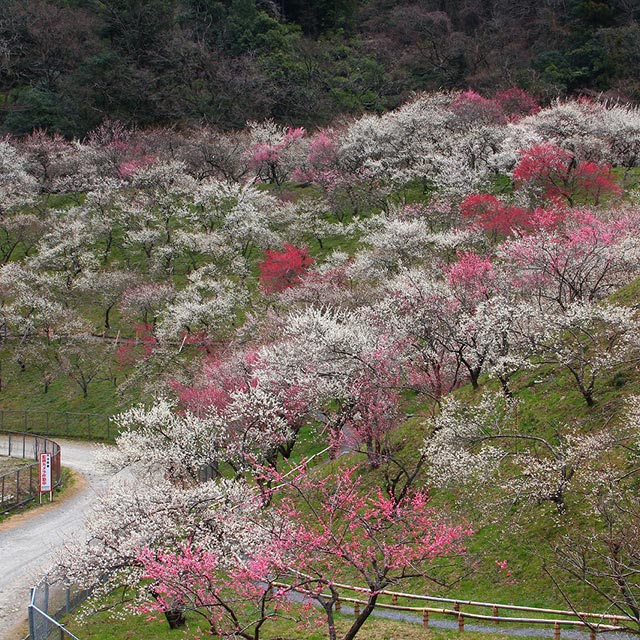
Kogesawa Bairin (Plum Grove)
- Hachioji City
- The Seasons of the Tama area
In Uratakao-machi, Hachioji City, the beautiful scenery spreads around in the town when the plums blossom. Kogesawa Bairin especially is known as a famous place in this area. With approximately 1400 genuine red plums and white plums Kogesawa Bairin is open to the public at the time of Takao Baigou Ume Matsuri (Plum Grove Festival) every March and you can enjoy taking a stroll around the area. You can also enjoy the full view of the breathtaking contrast of the red plums while you walk along the trekking course in the plum grove.
* Takao Baigo Ume Matsuri in Reiwa 3rd will be cancelled for prevention of the spread of Covid
1288-3 Uratakao-machi, Hachioji City, Tokyo 193-0841
TEL. 042-620-7378
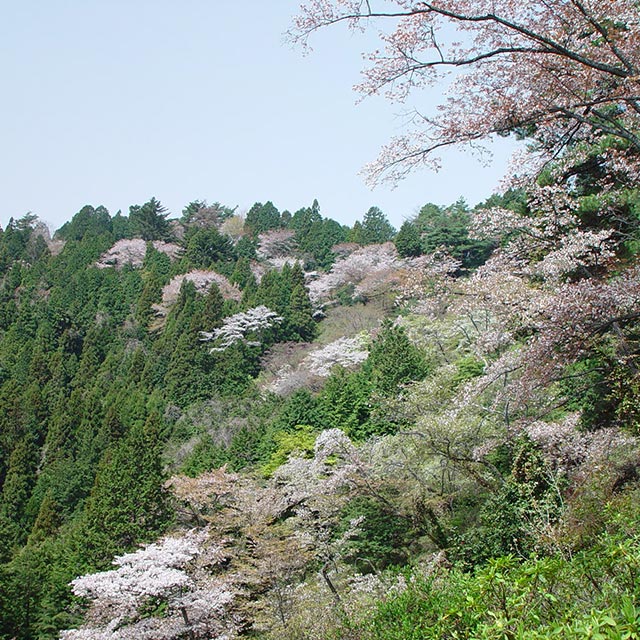
Konpira Koen Ryokuchi
- Akiruno City
- The Seasons of the Tama area
Konpira-san Mountain is known as a famous place for wild cherry blossoms and azaleas. Even the Sky Tree can be seen from Konpira Koen Park where the observatory is located.You can climb up Konpira-san Mountain in about an hour on foot from the nearest on station on the Itsukaichi Line, which is Musashi-itsukaichi Station. This mountain is a popular place for a gentle hike.During the rainy season, we also recommend a course that passes through “Minamisawa Hydrangea Mountain” where about 10,000 hydrangeas welcome you.
350 Ninomiya, Akiruno City, Tokyo 197-0814
TEL. 042-558-1111
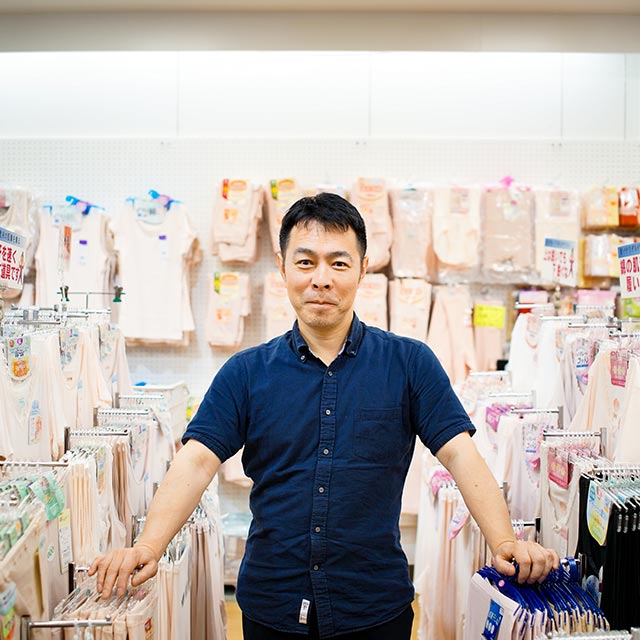
Itsumiya
- Hachioji City
- The Seasons of the Tama area
Itsumiya is a shop specializing in warm underwear. But it is not just underwear that is warm.The manager of the shop, Tomoyuki Nakano is active as a YouTuber. As of December 2020, the numbers of registered viewers of the channel “Walking Hachioji” have increased to over 10000 subscribers, Tomoyuki Nakano is transmitting the charm of the local area around Hachioji.Attention should be paid to Itsumiya’s passion for regional revitalization.
5-11 Hachiman-cho, Hachioji City, Tokyo 192-0053
TEL. 0428-78-8352
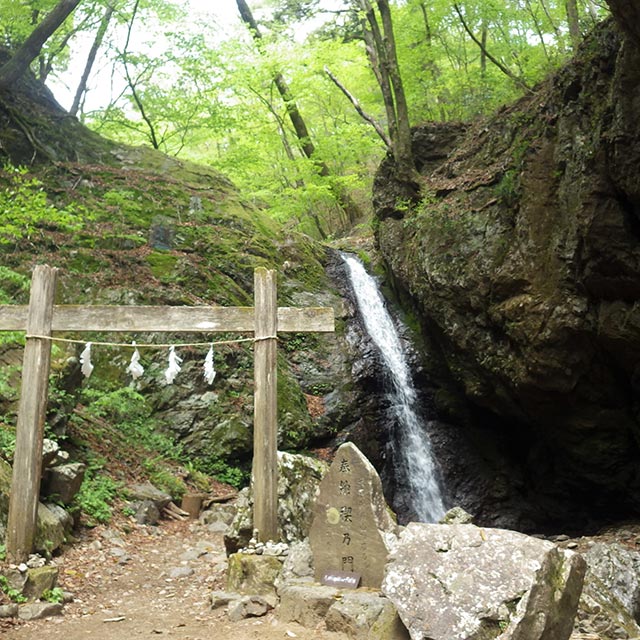
Mitake-san Mountain Rock Garden
- Ome City
- The Seasons of the Tama area
From the Nagaodaira observatory on Mitake-san Mountain in Ome City head toward Nanayo no Taki (Falls) and climb the steep ladder to enter the “Mitake-san Rock Garden” tour course.”Mitake-san Mountain Rock Garden” is a hiking course from Tenguiwa to Ayahiro no Taki (Falls).Appropriating the name of the rock garden, it has a promenade where huge and strange rocks continue to be carved by the mountain stream of Mitake-san Mountain. The course is surrounded by majestic nature and easy to walk, so even beginners can hike along it.
Mitake-san, Ome City, Tokyo 198-0174
TEL. 0428-78-9363
Introducing long established stores/Tama’s Gourmet
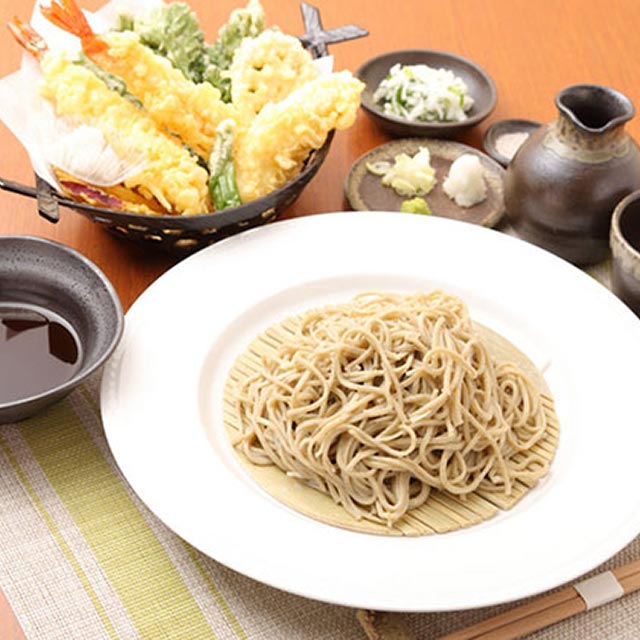
Soba (Japanese noodles) Kiryu-an
- Akiruno City
- The Foods of the Tama area
“Soba Kiryu-an” is a soba restaurant with a modern atmosphere that opened near JR Akigawa Station in 2015. The elegant storefront which resembles a traditional townhouse in Kyoto attracted notice.It is the center of attention for younger generations and tourists visiting Japan because it is said that you can enjoy authentic soba noodles in the restaurant with the warmth among the trees.The owner himself offers three types of soba, “Horokanai Soba in Hokkaido”, “Hitachi Aki Sob in Ibaraki Prefecture”, and “Aizu no Kaori in Fukushima Prefecture” all using carefully selected ingredients and handmade noodles.
You can enjoy the smooth texture of the noodles and the aroma of buckwheat flour because Ni(2)-Hachi(8) soba is made from a mixture of buckwheat and wheat flour. They serve “Three kinds of soba noodles” between which you can compare the taste, and a “Tempura assortment” with crispy tempura and soba noodles. “Soba Gallette” topped with ice cream and fruit is also available. In addition, you can enjoy domestic sake such as the sake “Chiyotsuru” by Nakamura Brewery in Akiruno City.
125-10 Aburadai, Akiruno City, Tokyo 197-0827
TEL. 042-533-2522
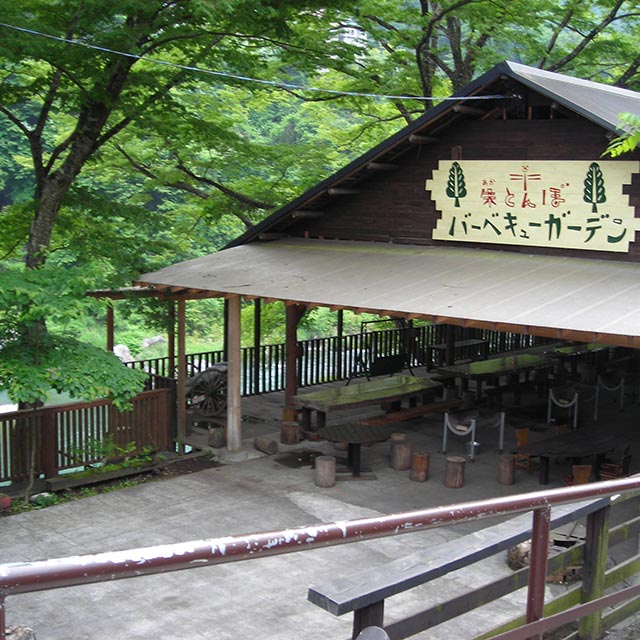
Rengado Akatonbo
- Akiruno City
- The Foods of the Tama area
About a 10-minute walk from Ikusabata Station on the JR Ome Line, “Rengado Akatonbo” is a barbecue site located upstream of the Tamagawa River. Surrounded by magnificent nature, you can enjoy barbecue in a roofed site that is not affected by the weather. Here you may also rent barbecue outfits and buy ingredients, so you can go without having to bring your own provisions. The site is ready with pizza kilns and a sunken fireplace so you can enjoy a wide variety of cooking methods. Why don’t you enjoy the surround nature and cooking meat while looking at the mountain stream in summer and at the sunken fireplace in winter?
403 1-chome Sawai, Ome City, Tokyo 198-0172
TEL. 0428-78-8352
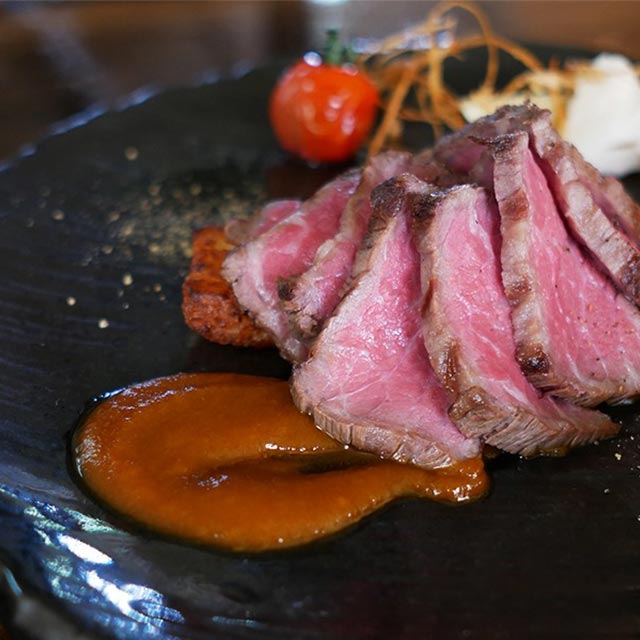
Café Restaurant Enishi
- Ome City
- The Foods of the Tama area
About 10 minutes by car from Higashi-Ome Station and Kabe Station on JR Ome Line, there is a creative cookery restaurant named “Café Restaurant Enishi” across from the Ome Daini Elementary School.
In 2011, it was opened by its chef in Ome City using the concept of food that can be easily eaten with chopsticks.
French From authentic French cuisine such as chicken confit salad and roasted duck with orange sauce, you can enjoy a wide range of dishes such as seared beef bowl and paella for lunch.
4-481-6 Nagabuchi, Ome City, Tokyo 198-0052
TEL. 0428-78-4897
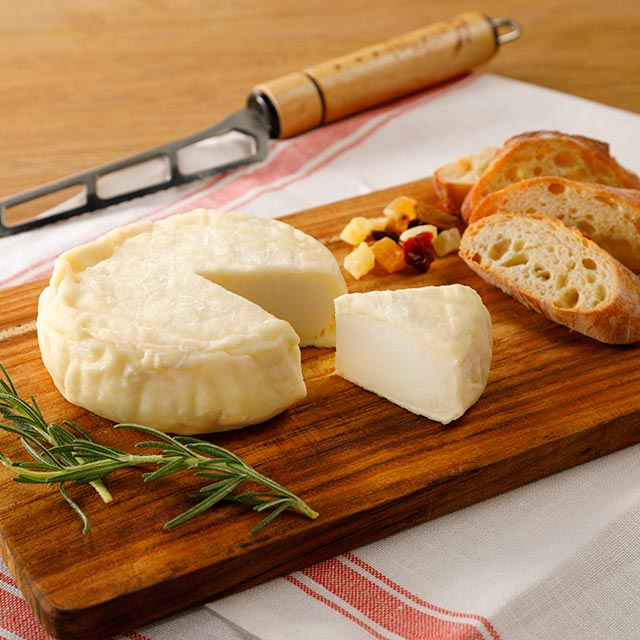
Fromage du Terroir
- Ome City
- The Foods of the Tama area
Cheese SFromagetudio du Terroir is about a 20-minutes walk from Ozaku Station on the JR Ome Line.They make cheese that is particular in its use of Ome’s special products such as sake from Ome City’s sake brewery “Ozawa Sake Brewery”.The original “Fromage d’Ome” acquried the Tokyo Metropolitan Area Special Product Certified Food designation in 2017 and has become a special product of Tokyo. Although it is cheese, it also has a flavor like miso and sake kasu, and goes well with white wine and sake. It is a cheese that can be used in a wide range of culinary situations because it has both a Japanese and Western taste.In addition to over-the counter sales, we also sell online.
2-677-102 Tomoda-machi, Ome City, Tokyo 198-0051
TEL. 0428-78-3458


